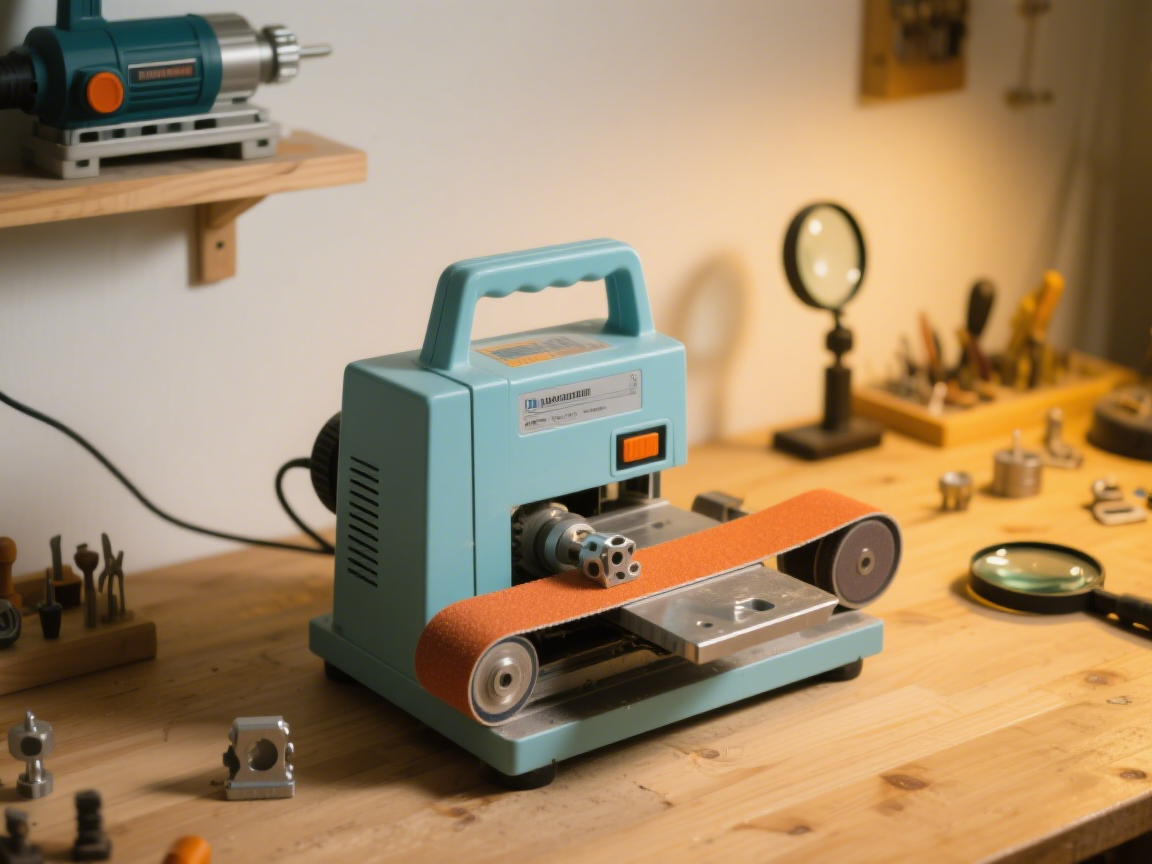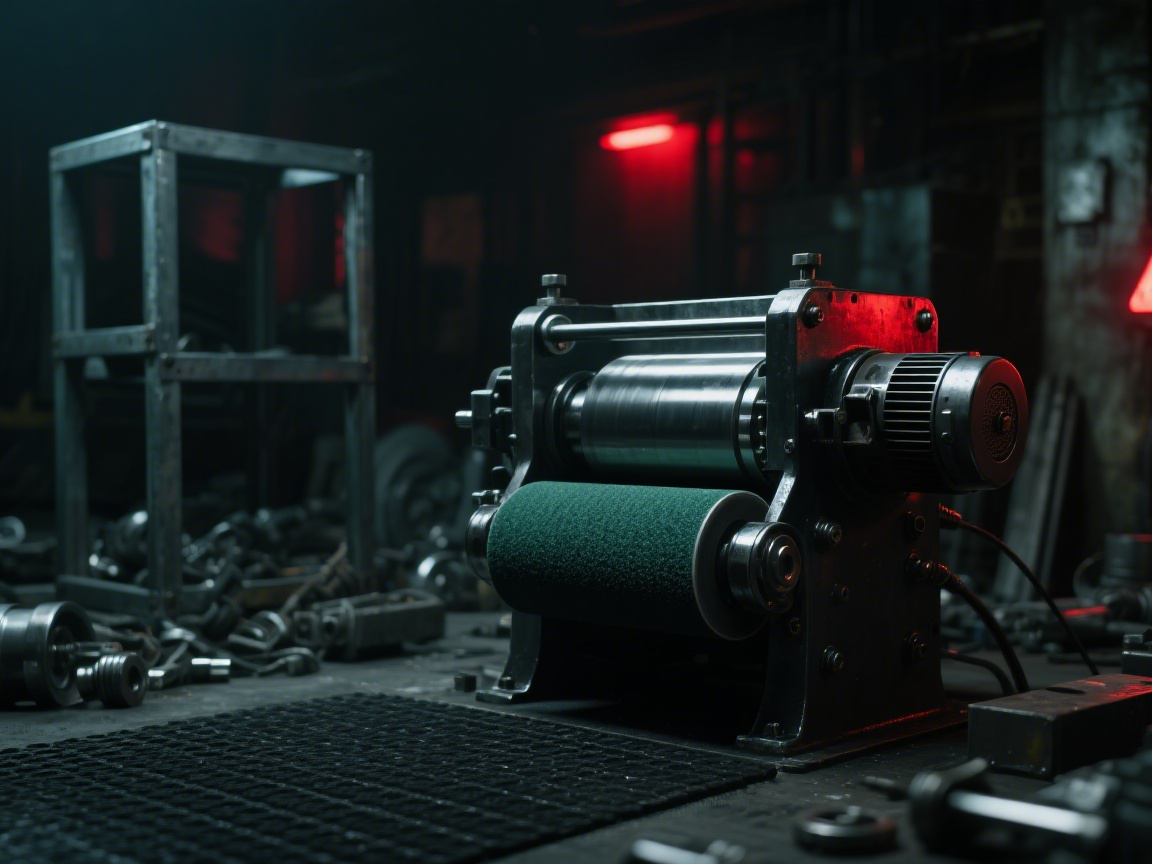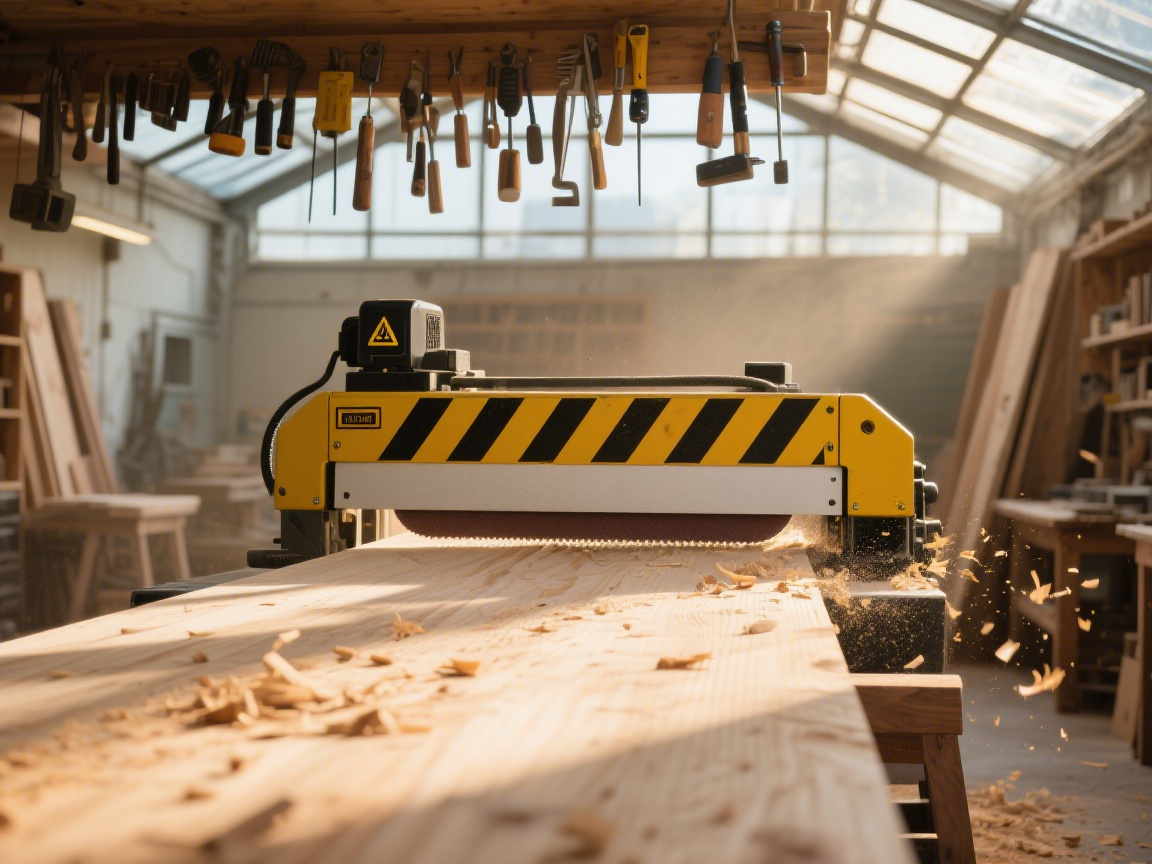What is a belt sander?
What is a belt sander?
I spent hours hand-sanding an old door once. My arms ached, the finish was uneven, and I almost gave up. Then I discovered the power of a belt sander.
A belt sander is a powerful woodworking and metalworking tool that uses a continuous loop of sandpaper to rapidly remove material. It is ideal for flattening large, rough surfaces, shaping wood, and stripping old finishes like paint or varnish.

But a belt sander is just one type of sander. Understanding the different kinds is key to choosing the right tool for your project. This helps you avoid costly mistakes and achieve a perfect finish. Let's look at the different sanders available.
Are there different types of sanding machines?
Walking into a tool store can be overwhelming. So many sanders look similar. Choosing the wrong one can ruin your workpiece or just waste your time and effort.
Yes, sanding machines are categorized by their sanding motion. The main types include belt sanders for aggressive removal, random orbital sanders for fine finishing, orbital sanders for general use, and detail sanders for tight corners and small areas.

To do a job right, you need the right tool. This is especially true with sanding. Using a powerful belt sander where a delicate detail sander is needed will destroy your project. In my workshop, where we prepare surfaces for luxury finishes like our shell mosaics, having the correct sander is not optional. It is essential. Let’s break down the most common types.
Key Sander Categories
| Sander Type | Primary Motion | Best For | Key Feature |
|---|---|---|---|
| Belt Sander | Linear (like a tank tread) | Aggressive material removal, flattening | Power and speed |
| Random Orbital Sander | Circular and orbital | Ultra-smooth, swirl-free finishing | Combines speed with a fine finish |
| Orbital Sander | Small circular or square orbits | General purpose, light sanding | Easy to control, good for beginners |
| Detail Sander | Triangular, oscillating pad | Corners, edges, and intricate areas | Reaches tight spots other sanders can't |
Each sander has a job. The belt sander is the workhorse for heavy lifting. The random orbital sander is the artist for the final touch. The orbital sander is a great all-rounder, and the detail sander handles the tricky bits.
What is the purpose of a sanding machine?
Many people think sanders only make wood smooth. This limited view means they miss out on the tool's true potential. A sander is much more than a simple finishing tool.
A sanding machine's primary purpose is to abrade and shape a surface. This includes rapidly removing stock, shaping curves, preparing surfaces for finishes like paint or varnish, and stripping away old layers of material.

Understanding the full purpose of a sander opens up new possibilities for your projects. It's not just about smoothness. It's about transformation. A sander can take a rough piece of reclaimed lumber and turn it into a beautiful tabletop. It can make sure a cabinet fits perfectly against a crooked wall. Let's explore these purposes more deeply.
Main Functions of a Sander
Rapid Material Removal
Sometimes you have a board that is too thick. A powerful belt sander can thin it down quickly. This is much faster than using a hand plane. It’s also perfect for leveling unevenly glued-up panels, making a flat surface to work from.
Shaping and Scribing
Sanders are not just for flat surfaces. You can use a belt sander on its side to shape gentle curves. It is also an amazing tool for scribing. Scribing is when you transfer the profile of an uneven surface, like a wall, onto a piece of wood, like a cabinet side. You then sand away the excess material for a perfect, gap-free fit.
Surface Preparation
This is the most common use. Sanding creates a uniform texture that helps paint, stain, and varnish stick properly. A smooth, well-sanded surface is the foundation of a professional-looking finish. Without it, coatings can fail or look blotchy.
What is the application scope of the belt sander?
My first time with a belt sander, I dug a huge gouge into a tabletop. I learned that its power needs respect. You must know exactly when and where to use this beast.
A belt sander excels at aggressive jobs on large, flat surfaces. Common applications include flattening rough lumber, refinishing hardwood floors, scribing cabinets to uneven walls, and quickly removing paint or rust from wood and metal.

The belt sander is a specialist tool. It is not for every sanding task. Using it correctly can save you hours of labor. Using it incorrectly can ruin a project in seconds. I've learned to love its power by using it only for the jobs it was designed for. Let's define its ideal applications.
Best Uses for a Belt Sander
- Flattening Tabletops and Panels: When you glue boards together, the surface is often uneven. A belt sander, moved diagonally across the grain, can quickly level the entire surface.
- Scribing: As mentioned, it's the best tool for fitting cabinets or countertops to wavy walls. You draw the wall's contour onto the wood and use the belt sander to grind it down to the line.
- Stripping Old Finishes: If you need to remove layers of old paint or thick varnish from a large door or floor, a belt sander with a coarse-grit belt will do the job in a fraction of the time of other methods.
- Initial Shaping: It can be used to create large, gentle curves or put a chamfer on a heavy beam.
When NOT to Use a Belt Sander
Just as important is knowing when to leave it on the shelf.
- Fine Finishing: Never use it for the final sanding before applying a finish. It is too aggressive and will leave deep scratches. Use a random orbital sander for that.
- Small or Narrow Pieces: The tool is too powerful and difficult to control on small parts. It can easily damage the piece or your fingers.
- Inside Corners: A belt sander cannot get into tight corners. That is a job for a detail sander or hand sanding.
Conclusion
A belt sander is a powerful tool for rapid material removal. Understanding the different sander types and their specific purposes helps you achieve professional results on any surface.
